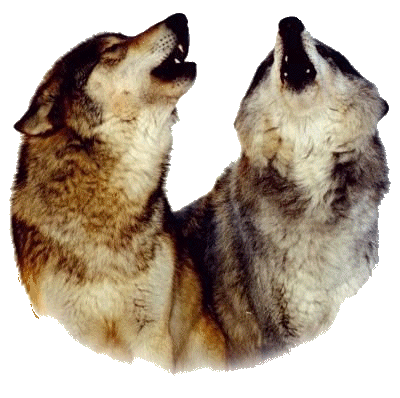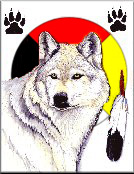|
Site Map
The evolution of Lakota social and political structure from pre-contact through the present with maps of the Lakota Nation.
Traditional Lakota tales of the creation of the universe, the earth and the emergence of life and mankind within it.
Lakota traditional spiritual beliefs, rites and ceremonies, past and present
Traditional Lakota folk tales in English and Lakota.
A guide to the Lakota alphabet and pronunciation with streaming audio. An introduction to Lakota rules of grammar, verb lists and dictionaries (English & Deutsch).
Song structure of Plains music, historical diffusion of songs, dances and regalia on the Plains. Lakota songs to listen to and download.
Current events, national news clippings.
The full complete text of Treaties and U.S. Supreme Court decisions.
Šung'manitu-tanka, the Great Plains or Buffalo Wolf - The nation of wolves and their unique relationship with the Lakota.
Links to Native American sites on the World Wide Web.
|

Šung'manitu-tanka 0yate
|
|
|
|
|

GRAY WOLF
|
Kingdom: Animalia
Phylum: Chordata
Class: Mammalia
Order: Carnivora
Family: Canidae
Genus: Canis
Species: lupus
|
Physical Appearance: The gray wolf being the largest member of the canid family stands 26 to 38 inches at the shoulder and has a length of 40 to 58 inches from the head to the base of the tail. The tail can be as long as 20 inches but are usually no shorter than 13 inches. The male is generally 15 to 20 percent larger than the female. They range from solid white or black, to all shades of gray, tan and brown. Some wolves have dark markings on their faces, while others have a patch on their back, that is saddle-shaped and contrasts with the rest of their coat. Quite often the tip of the wolf's tail is black in color.
Habits and Reproduction: Grey wolves are highly social animals living within packs. Each pack comprises two to thirty-six individuals, depending upon habitat and abundance of prey. The territory of a pack ranges from 130 to 13,000 square kilometers, and it is defended against intruders. Only dominant wolves reproduce. A wolf pair will mate 1-2 times a day for 2 weeks. The gestation period is 9 weeks. The female gives birth to 3-10 young in an excavated underground den. The sightless whelps are helpless and must be fed for 6-8 weeks. An adult will either bring food to the young or regurgitate it if the food must be carried over long distances. The youngsters spend the first few months of their life in the den. Young wolves are lucky to survive; the mortality of pups is greater than sixty percent.
Geographic Range: The Timber Wolf inhabits forests, mountainous regions, and tundra. They are found in parts of North America and Europe, Canada, the eastern Soviet Union, and there are small numbers in the Abbruzzi Mountains in Italy.
Biome: tundra, taiga, temperate forest & rainforest, temperate grassland
Habitat: A wide variety of habitats are used by gray wolf packs, ranging from arctic tundra to forest and prairie -- once again depending upon geographic and prey distribution. However, they are usually not found in deserts or high mountain tops.
Diet: The gray wolf, a carnivore, is a predator that generally preys on weak, old, or very young animals, preferring them to animals in prime condition. The diet of choice consists of many species of ungulates and beavers. However, wolves have been known to snack on fish, chipmunks, and mice -- which the wolf also plays with before consuming. These smaller mammals, however, do not contain enough nutrition to ensure the survival of the adult. The variation in diet is based primarily on geographic location, but also depends on availability. The gray wolf can consume as much as twenty pounds of meat at a time -- but only about one out of every thirteen hunts is successful. Furthermore, the gray wolf can digest nearly everything, assimilating all protein matter consumed. When the scat of the wolf is dissected, only bone chips and fur are present.
IUCN Status: Vulnerable
U.S. ESA: Endangered
Threats to Survival: Hunting due to conflict with humans (especially livestock farmers). Hunting of the wolf occurs, both controlled and uncontrolled throughout most of its range. Misunderstanding on the part of the public concerning the threat and danger of wolves, clearance and fragmentation of habitat and hybridization with domestic and feral dogs.
|
|
|




|
|







